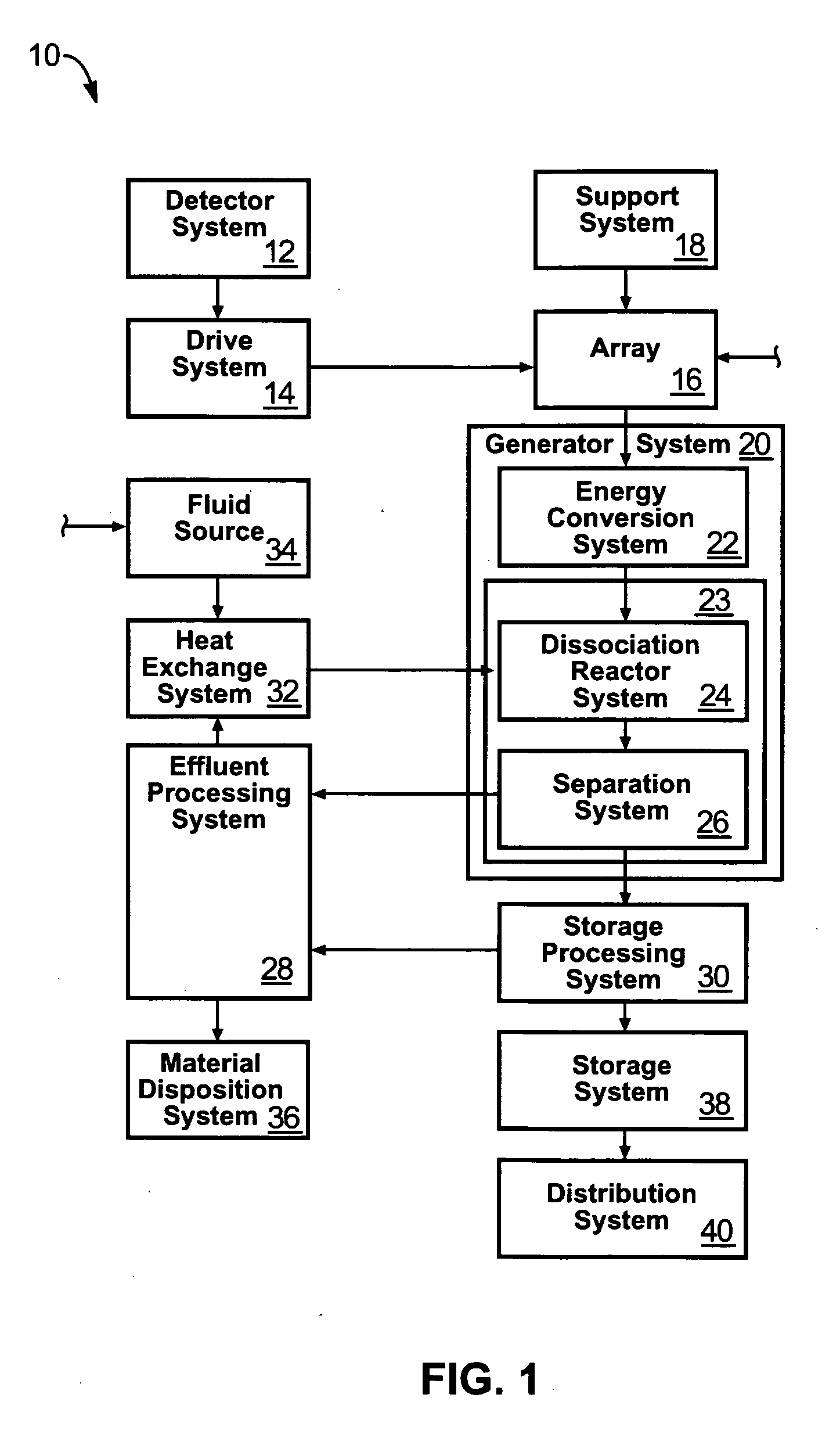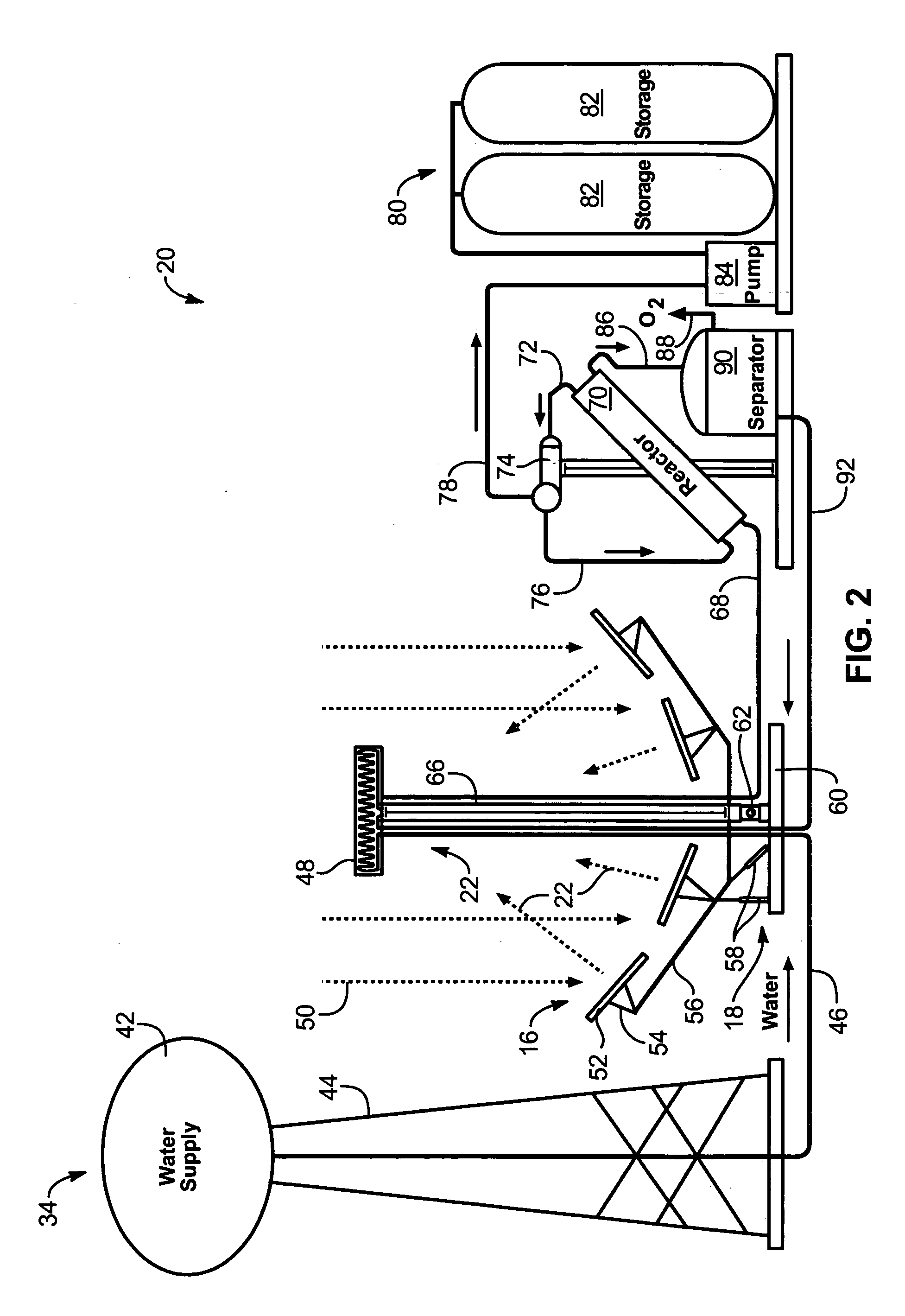Solar, catalytic, hydrogen generation apparatus and method
a hydrogen generation and catalytic technology, applied in the field of solar energy collection and storage, can solve the problems of frictional losses through the turbine, inefficiency in each aspect of the generation, delivery and utilization of electrical energy, and process may not be particularly efficient thermodynamically or environmentally, etc., to achieve high thermodynamic availability, high temperature, and efficiency loss
- Summary
- Abstract
- Description
- Claims
- Application Information
AI Technical Summary
Benefits of technology
Problems solved by technology
Method used
Image
Examples
Embodiment Construction
[0052] It will be readily understood that the components of the present invention, as generally described and illustrated in the Figures herein, could be arranged and designed in a wide variety of different configurations. Thus, the following more detailed description of the embodiments of the system and method of the present invention, as represented in FIGS. 1 through 23, is not intended to limit the scope of the invention, as claimed, but is merely representative of the presently preferred embodiments of the invention.
[0053] The presently preferred embodiments of the invention will be best understood by reference to the drawings, wherein like parts are designated by like numerals throughout.
[0054] Referring to FIG. 1, an apparatus, method, and system 10 in accordance with the invention may include a detector system 12 for detecting radiation from the sun, in order to track the sun. A drive system 14 may provide mechanisms to move an array 16, such as an array 16 of mirrors coll...
PUM
 Login to View More
Login to View More Abstract
Description
Claims
Application Information
 Login to View More
Login to View More - R&D
- Intellectual Property
- Life Sciences
- Materials
- Tech Scout
- Unparalleled Data Quality
- Higher Quality Content
- 60% Fewer Hallucinations
Browse by: Latest US Patents, China's latest patents, Technical Efficacy Thesaurus, Application Domain, Technology Topic, Popular Technical Reports.
© 2025 PatSnap. All rights reserved.Legal|Privacy policy|Modern Slavery Act Transparency Statement|Sitemap|About US| Contact US: help@patsnap.com



